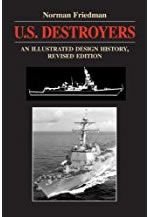USS Jenkins (DD-42), 1919
|
|
USS Jenkins (DD-42) was a Monaghan class destroyer that took part in the US intervention in Mexico in 1914, then operated from Queenstown in Ireland during 1917-18.
The Jenkins was named after Thornton A. Jenkins, a US Naval officer during the Mexican War and American Civil War, rising to command the Asiatic Station in 1870-73.
The Jenkins was laid down at Bath, Maine, on 24 March 1911, launched on 29 April 1912 and commissioned on 15 June 1912. She spent most of the period before the First World War operating with the Atlantic Fleet, on the normal mix of training off the US East Coast in the summer and in manoeuvres in Cuban waters in winter.
In 1914 the Jenkins took part in the US intervention in Mexico, moving to Tampico to take part in a blockade of the Mexican coast. Anyone who served on her on 22 April-10 May or 14 May-14 June 1914 qualified for the Mexican Service Medal.
After the start of the First World War the Jenkins joined the neutrality patrol along the US East Coast. After the US entry into the war in April 1917 she was one of the first US destroyers to be sent to Europe, departing on 26 May 1917. She was based at Queenstown, Ireland, for the rest of the war, from where she performed a mix of anti-submarine patrols, single ship escorts and convoy escort duties.
During that time she made a number of attacks on suspected U-boats, but without any recorded successes. In the period April-May 1918 the Jenkins and the Davis each escorted nine merchant convoys in European waters, second only to the McCall with eleven. During the war she was given a splinter shield for her forward 3in gun.
Between 15 June and 11 September 1918 she was commanded by James L. Kauffman, who was awarded the Navy Cross for his leadership in the role. Kauffman went on to hold a series of senior posts during the First World War, ending the war as Commander of Naval Forces Operating in the Philippines.
Anyone who served on her between 1 June 1917 and 11 November 1918 qualified for the First World War Victory Medal.
The Jenkins returned to Boston on 3 January 1919, and operated along the US East Coast until July. She then moved to Philadelphia, where she was decommissioned on 31 October 1919. She remained out of service until she was sold for scrap in 1935.
Displacement (standard) |
787t |
Displacement (loaded) |
883t |
Top Speed |
29.5kt design |
Engine |
3-shaft Parsons turbines |
Range |
2,175nm at 15kts on trial |
Armour - belt |
|
- deck |
|
Length |
292ft 8in |
Width |
27ft |
Armaments |
Five 3in/50 guns |
Crew complement |
89 |
Launched |
29 April 1912 |
Commissioned |
15 June 1912 |
Fate |
Sold for scrap 1935 |
 U.S. Destroyers: An Illustrated Design History, Norman Friedmann .
The standard history of the development of American destroyers, from the earliest torpedo boat destroyers to the post-war fleet, and covering the massive classes of destroyers built for both World Wars. Gives the reader a good understanding of the debates that surrounded each class of destroyer and led to their individual features.
U.S. Destroyers: An Illustrated Design History, Norman Friedmann .
The standard history of the development of American destroyers, from the earliest torpedo boat destroyers to the post-war fleet, and covering the massive classes of destroyers built for both World Wars. Gives the reader a good understanding of the debates that surrounded each class of destroyer and led to their individual features.